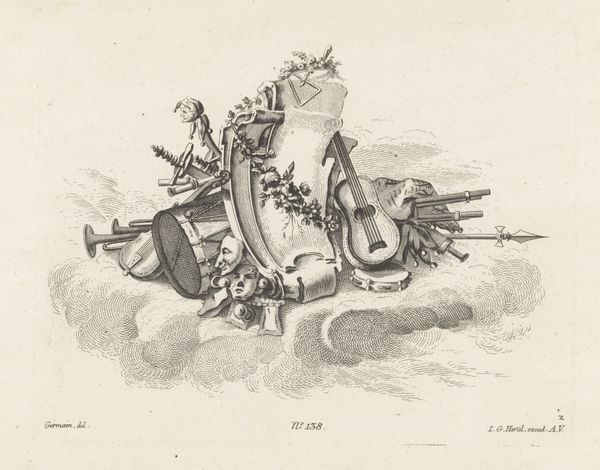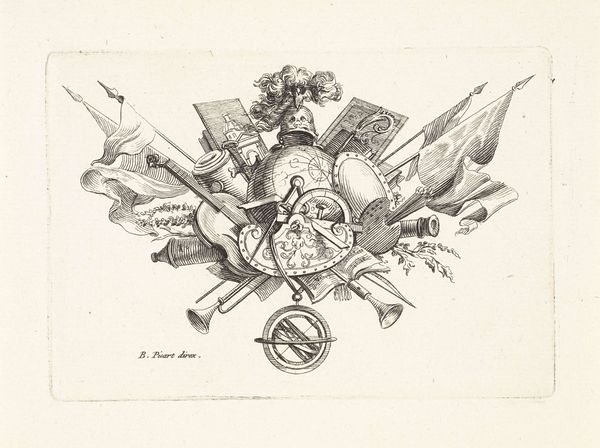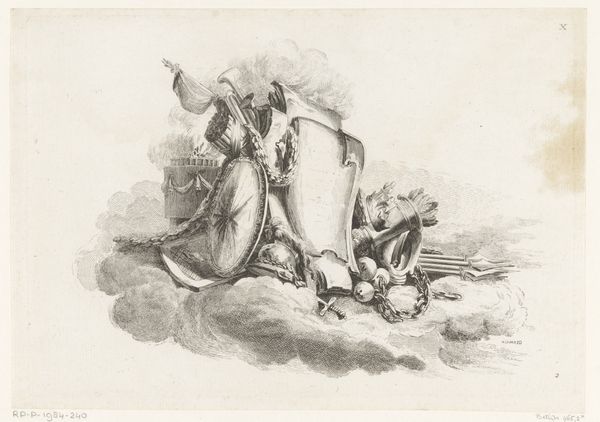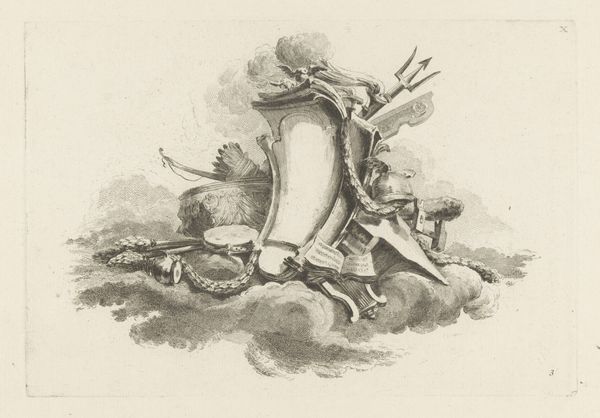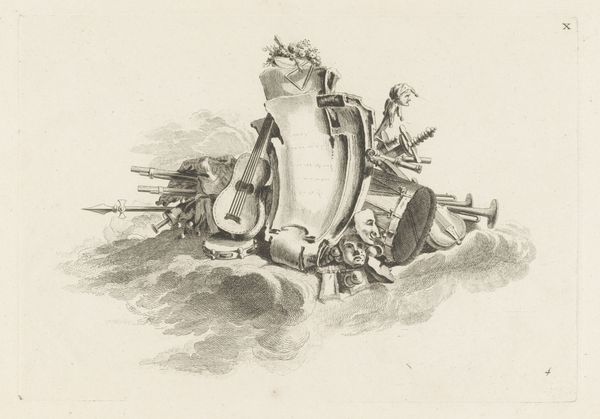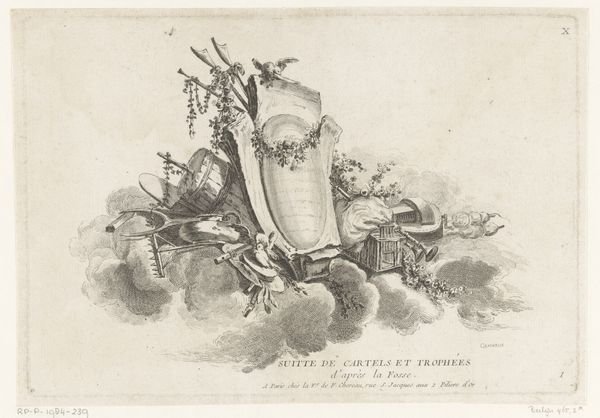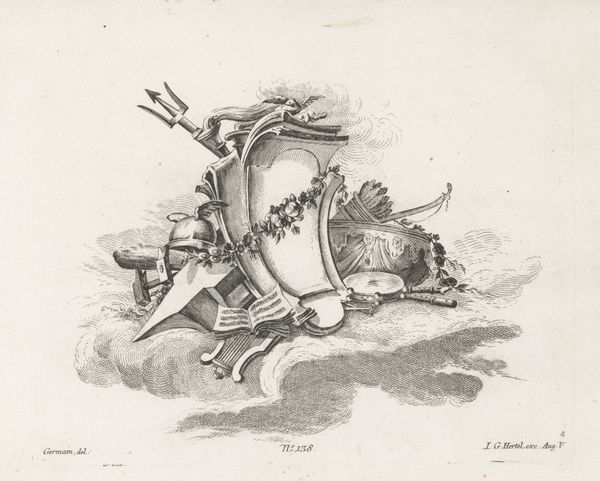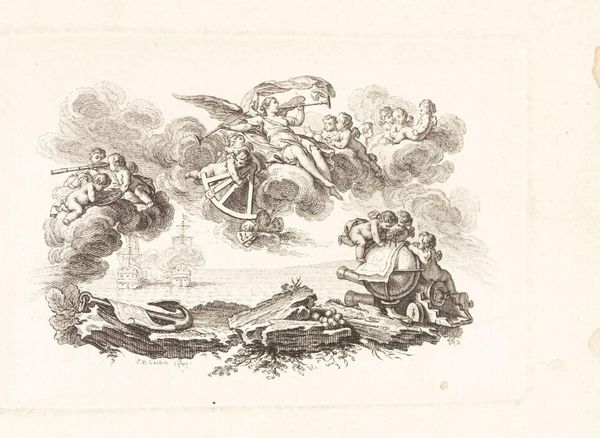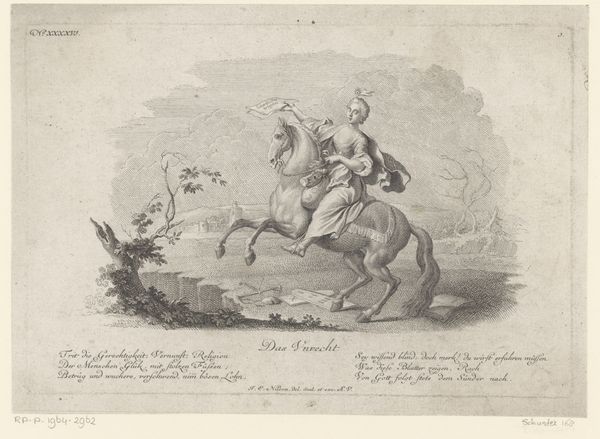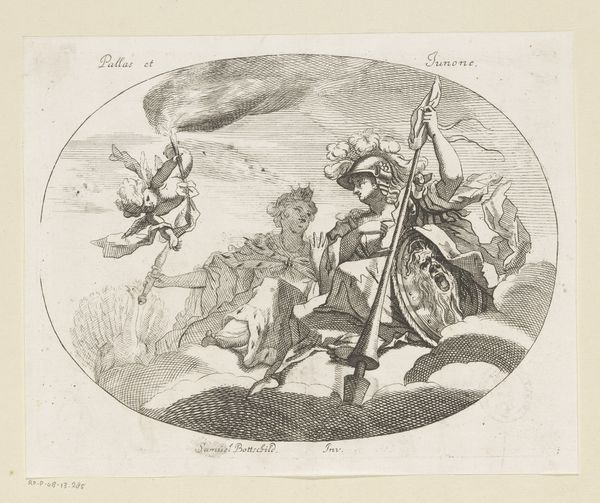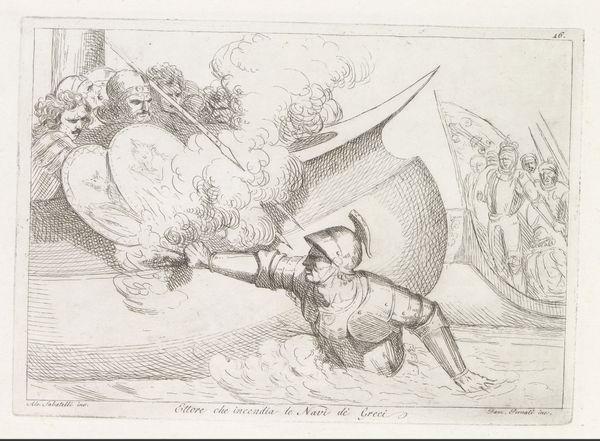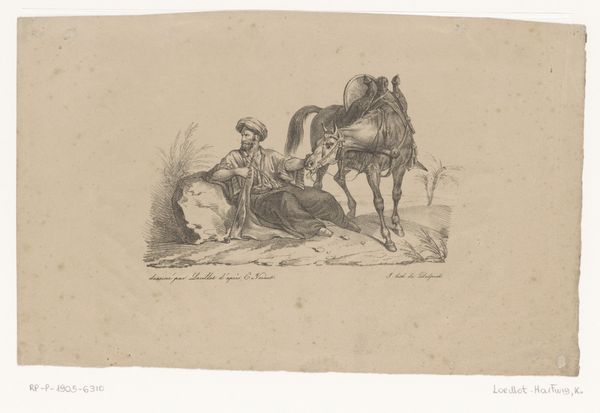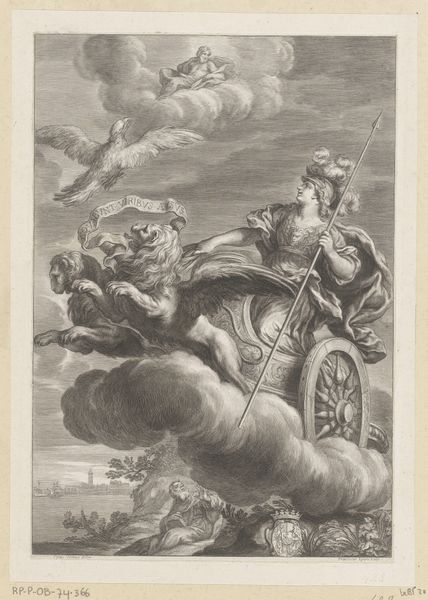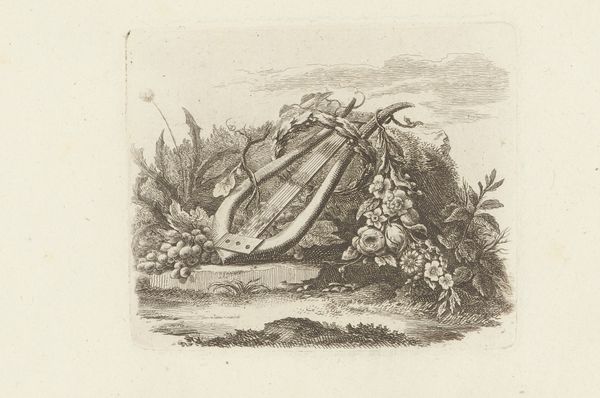
Dimensions: height 185 mm, width 245 mm
Copyright: Rijks Museum: Open Domain
Curator: What strikes me immediately is the overwhelming sense of masculinity radiating from this tableau of arms. Editor: That’s certainly an angle, but first, let’s orient our listeners. Here we have an engraving titled “Cartouche met wapens,” or “Cartouche with weapons,” created after 1771 by an anonymous artist. It’s part of the Rijksmuseum's collection. Curator: And what a statement it makes. There's a shield, a helmet with feathers, spears, trumpets – all carefully arranged, aren't they? Editor: They certainly are. It’s a bold, almost bombastic arrangement typical of decorative art from that period, referencing Baroque sensibilities even if the line work is cleaner. We have this explosion of martial power contained within a very artificial, almost theatrical cloud. Curator: Precisely. The choice to group together symbols of power feels intentional, a commentary perhaps on societal ideals around masculinity and nationhood at the time. There are undertones of a military campaign, victory, control... Editor: Or simply a celebration of power, the state, and potentially war itself. The inclusion of objects like a laurel wreath around the trumpet, or wheat among the weaponry, could represent civil virtues interwoven with martial ones. Think of it as controlled chaos to communicate strength. It mirrors the aesthetics that would pervade visual culture in late 18th-century Europe, supporting established authority and nobility. Curator: While it evokes these things, I can't help but view such art through a contemporary lens. Does celebrating conquest empower harmful ideologies even now? By focusing on such historical depictions, are we perhaps endorsing these systems of power? Editor: It's critical that we remember art like this does reflect a particular ideology. We have a responsibility to critically examine what's represented, and more importantly, what's left unsaid. Whose voices are absent from this triumphant display? Curator: So by unpacking these complex images, we may see both the artwork itself but additionally also glimpse both current events and recent issues with representation. Editor: Exactly. Approaching this print through an intersectional lens allows us to both understand the values and norms of the time period as well as start crucial dialogues in society as it currently stands.
Comments
No comments
Be the first to comment and join the conversation on the ultimate creative platform.
